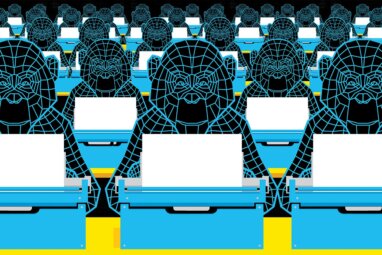Where Are the Robots?
Automation fears distract from the real problem: too few blue-collar workers.
Topics
Frontiers

Following the Great Recession, anxiety intensified over the prospect of automation causing permanent, widespread unemployment. Feeding on public alarm, a large number of studies assessed the likely impact of future automation on jobs. Although some touted the potential for job creation, others predicted catastrophic job loss.
Today, after more than a decade of continuous U.S. economic expansion, the fear of automation remains entrenched in the country’s psyche, dominating public discussions and political debates. The Pew Research Center found that 65% of Americans expect that, in the coming decades, robots and computers will do much of the work currently done by humans. Prominent figures like Elon Musk have echoed these sentiments, claiming that robots will outperform humans at every task and inflict widespread job loss.
The fear is not baseless. Advancements in AI technology have eliminated many routine office and administrative jobs. And from 1990 to 2010, in particular, technology replaced millions of jobs, especially in manufacturing, with devastating implications for workers, families, and communities.
Today, the fear of massive job loss caused by robots needs a reality check. Labor productivity growth, a measure highly correlated with automation, has significantly slowed in recent years. Between 2010 and 2019, it grew less than 1% annually — a historically slow pace, and well below the 3% rate from 1995 to 2005. If productivity growth in the last decade is any guide to productivity growth in the next, then automation doomsdayers can breathe a sigh of relief.
Automation anxiety distracts from a genuine, pressing problem afflicting the U.S. economy today: a lack of workers at a time of resurgent blue-collar job growth. Blue-collar and manual service workers — the same groups automation forecasters view as most vulnerable — are currently experiencing one of the tightest labor markets ever.
While a boon for workers, such shortages have cost blue-collar industries significantly. In the manufacturing sector, for example, profits have plunged by 46% since their 2014 peak. A 2019 Conference Board survey of mostly HR leaders echoed this pain point: 38% of respondents from mostly blue-collar industries said labor shortages hurt their profitability, but just 8% from mostly white-collar industries said the same.
The Perfect Storm
The convergence of several trends has caused gaping labor shortages. First, amid the proliferation of retiring baby boomers — a trend that will continue through 2030 — the U.S.




